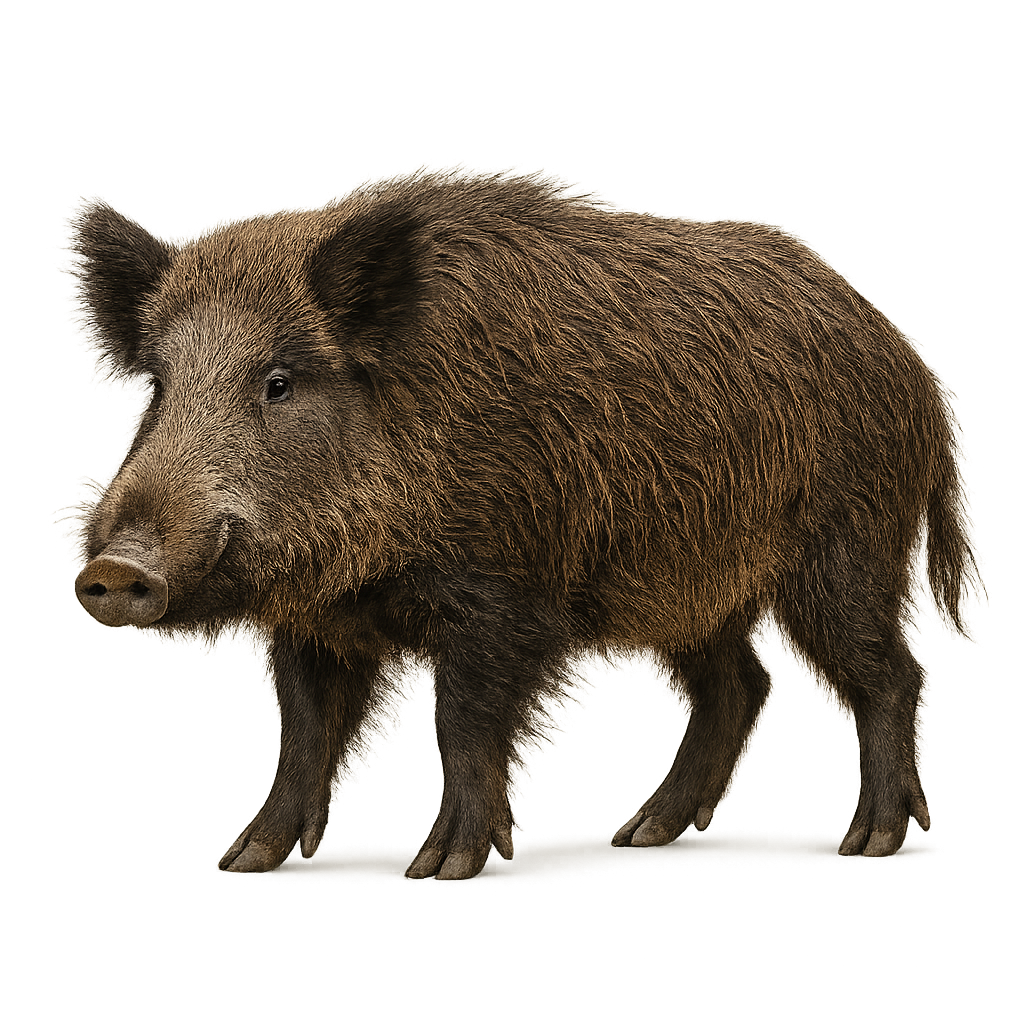Observe and photograph a species in its natural habitat
Learn where and when to observe a species in the wild, how to recognize it in the field, and what habitats it lives in. Get photography tips adapted to its behavior and capture stunning images without disturbing the animal. For full details, open the complete profile in the WildlifePhotographer app.
Eurasian Wild Pig
Scientific name: Sus scrofa

IUCN Status: Least Concern
Family: SUIDAE
Group: Mammals
Shyness: Shy
Safe distance: 30 m
Breeding season / Courtship: 15.10-15.01
Gestation: 110-120 jours
Births: 01.03-31.05
Habitat:
Forests, swamps, and crops
Description:
The Wild Boar is a large omnivorous mammal found primarily in forests, wooded areas, and mountains of Europe, Asia, and North Africa. It measures between 1.2 and 1.8 meters in length, with a tail of 15 to 25 cm, and weighs between 50 and 100 kg, though some specimens can reach up to 200 kg. Its fur is typically brown, with darker hair on the back and lighter on the sides. The Wild Boar is a nocturnal animal, primarily feeding on roots, fruits, seeds, insects, and small animals. While it is considered game, it can sometimes pose a threat to agricultural crops due to its tendency to root through the soil. This species is widely distributed, and its population remains relatively stable, although it is sometimes threatened by excessive hunting and habitat loss.
Recommended lens:
>=400 mm
Photography tips:
Use a telephoto lens to photograph from a distance, respecting the discreet and sometimes aggressive nature of the species.
Photograph early in the morning or late in the afternoon, when the soft light highlights the details of the boar's fur.
Look for it in forests, woods, and undergrowth areas, where it feeds mainly on roots, fruits, invertebrates, and sometimes young plants.
Be patient and discreet to avoid disturbing its natural behavior. Avoid sudden movements and maintain distance, especially during the rutting season or with young ones.
The Wild Boar is a widely present species, but it can become aggressive, especially when it feels threatened. It is essential to respect its space and minimize disturbances, particularly during the breeding season and population management.
Ready to take action?
Choose your platform and start your free trial today



